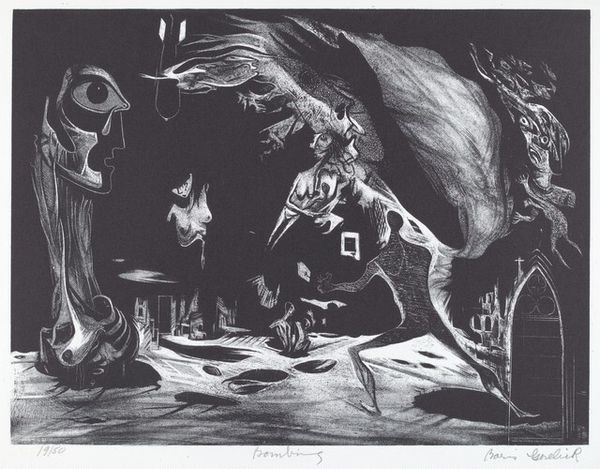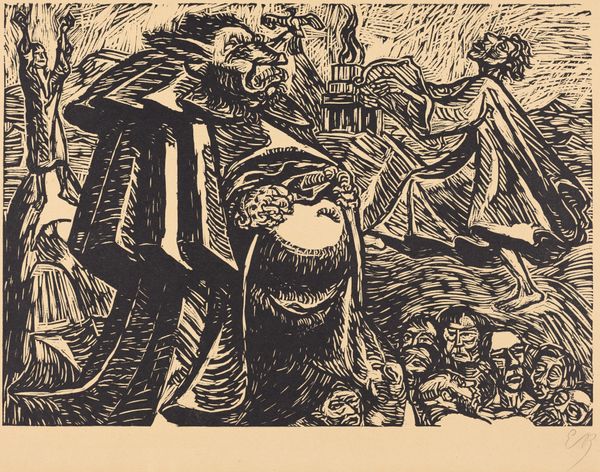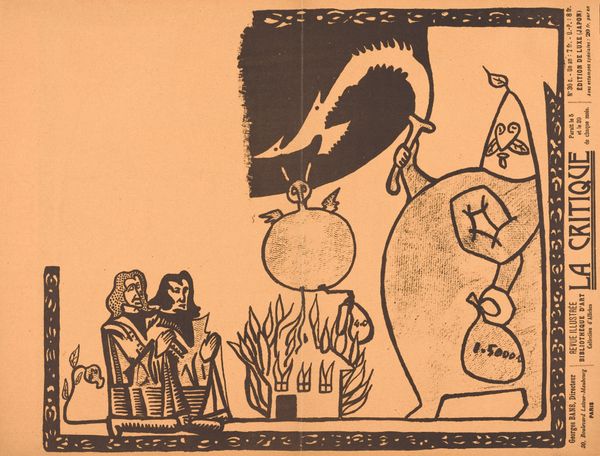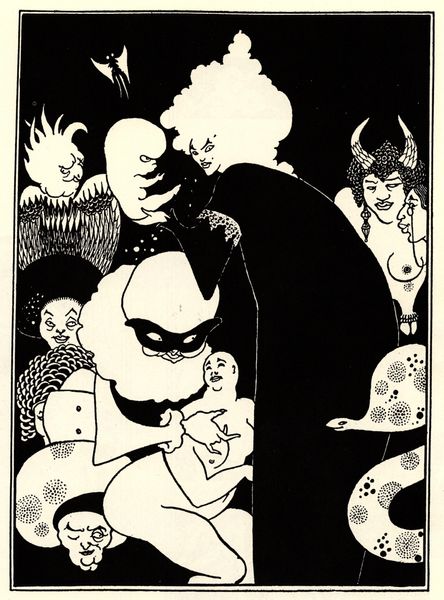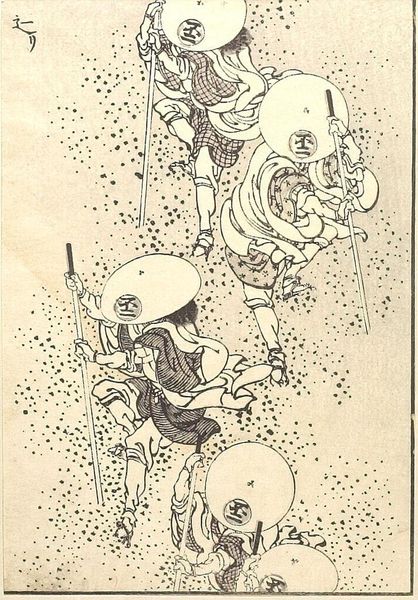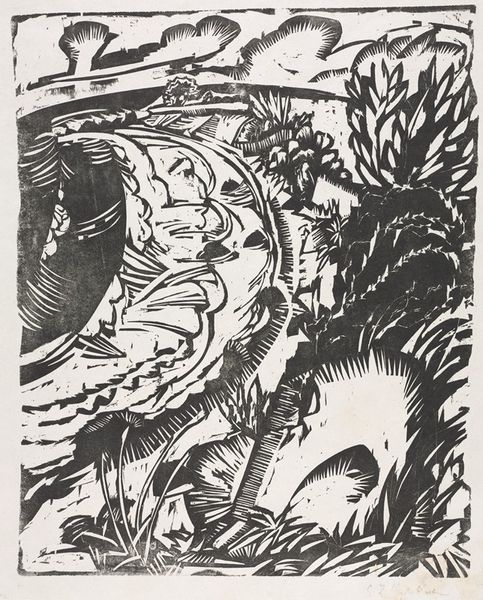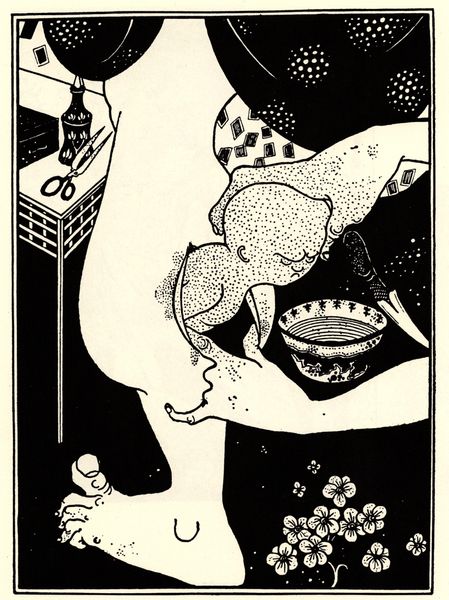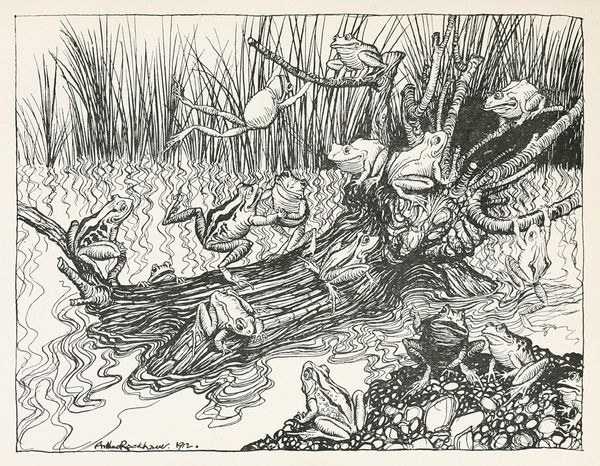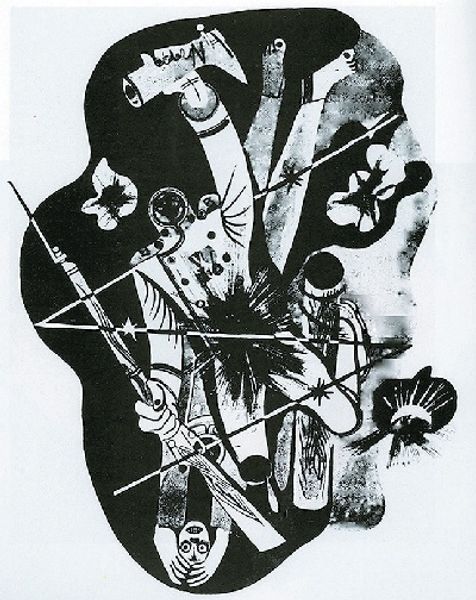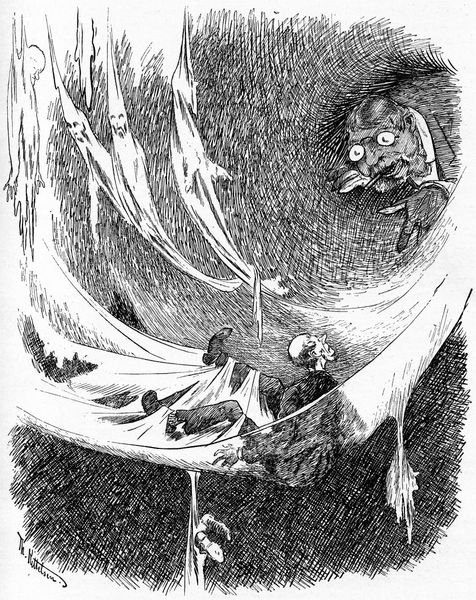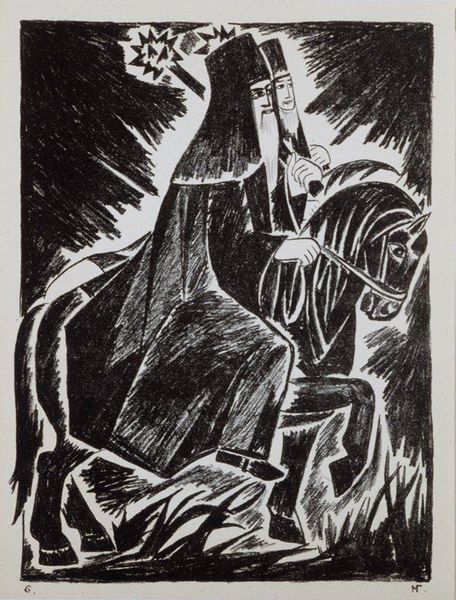
acrylic-paint
#
narrative-art
#
comic strip
#
war
#
acrylic-paint
#
geometric
#
pop-art
#
cityscape
#
history-painting
#
comic art
#
graphic novel art
#
modernism
Dimensions: 38.1 x 43.2 cm
Copyright: Roy Lichtenstein,Fair Use
Editor: This is Roy Lichtenstein's "Jet Pilot" from 1962, rendered in acrylic paint. It has a strong graphic quality, like a comic book panel. How would you interpret this work? Curator: Considering Lichtenstein’s appropriation of comic book imagery, it’s vital to see this through the lens of mass production and consumption. The work isn’t just about the pilot or the plane; it's about the industrial processes that create the image itself. Note the use of acrylic—a relatively new, mass-produced material at the time. How does its use challenge traditional notions of art? Editor: I see what you mean. Acrylic feels… manufactured, I guess. Not like the "natural" pigments artists used historically. Does the fact it is monochrome reduce the work? Curator: Quite the contrary. By simplifying the color palette and using such sharp outlines, the artist emphasizes the printing process. Consider the labor involved in producing comic books on a massive scale. Lichtenstein elevates this process to fine art. He's calling attention to the means of production behind the seemingly simple image. And of course, to its potential as war propaganda... What does this mechanical representation suggest about war itself? Editor: That’s a powerful point. It detaches us, perhaps, dehumanizes the experience through this clean, commercial aesthetic. The war as an event, a product. Curator: Precisely. The benday dots, the bold lines—these are all elements lifted directly from commercial printing. They remind us that even something as serious as war can be packaged and sold to the public. Lichtenstein isn't necessarily glorifying or condemning war; he's critiquing its representation and consumption within society. Editor: So, understanding the materials and the mass production element shifts our focus away from the pilot’s story and more towards the broader system. Thanks! Curator: Indeed, the value lies not just in the aesthetic but in unveiling the economic and material circumstances shaping both the artwork and its subject.
Comments
No comments
Be the first to comment and join the conversation on the ultimate creative platform.

